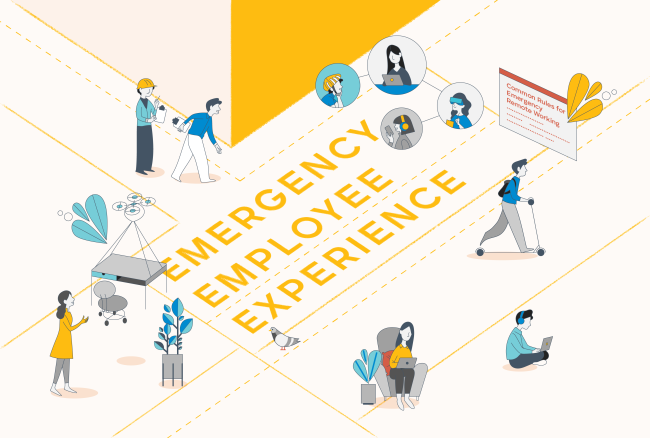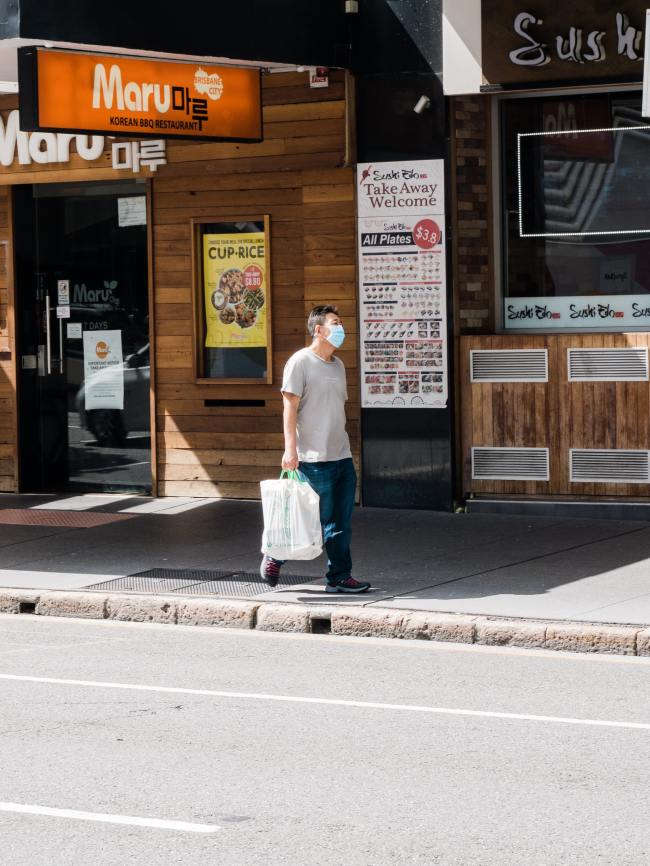
The first part in this two-part series looked at the ways public life has moved online and private life has withdrawn towards independence. This post concludes the analysis by looking at the way economic activity is moving into the home and the effect on public commercial spaces.
Homebody Economy
At the intersection of the two previous, seemingly opposing, forces (being technologically logged on and commercially dropped out) are the ways the tech sector actually helps us stay home and avoid social contact. Call this space the homebody economy; a phenomenon that has been noted in numerous essays over the last few years. It’s a confluence of commercial tech trends (on-demand, streaming media) and cultural influences (self-care, introversion, social media FOMO as self-fulfilling prophecy) that add up to neither wanting to leave the house nor having to. What seemed like a slightly dark cultural drift before the pandemic now feels providential; before we truly needed it, Silicon Valley built us the infrastructure to have groceries delivered and be endlessly entertained while sheltering in place.
For consumers, facing down an uncertain period of home captivity resulted in the understandable desire to nest. People invested in exercise equipment, books and games, freezers, home-office equipment, and home improvement. Entertainment streaming subscriptions soared, and grocery delivery boomed.
Where previously Peloton and its cohort were one of the few spaces streaming personal service experiences, now all sorts of providers have gone digital; stylists, doulas, personal trainers, music teachers, sneaker salespeople, even sex workers.
We are learning to live remotely, in addition to working remotely, teaching and learning remotely, and receiving healthcare remotely. Organizations, too, learned new (remote) tricks, from curbside to digital storefronts. It’s a banner year for the -techs: edtech, healthtech, proptech (that’s real estate), legaltech. Under social distancing, any products (whether smart gym equipment, connected vibrators, or at-home test kits) and services that let us get stuff done while reducing physical contact are going to be welcomed.
Implications for Business
As service experiences go remote, they change in many ways. Remote experiences ask more from the consumer in terms of participation; in healthcare scenarios, patients become responsible for collecting their own data. In fitness, they might provide their own equipment, narrowing the experience touchpoints from setting and tools to just guidance.
Many businesses and industries (small or local and niche) that weren’t previously online are being forced to get savvy, diversifying an already exceedingly competitive platform marketplace. If you’re ahead now, seize this window of opportunity to invest in improving your digital experience, as both consumer choices and expectations will increase as the pandemic drags on.
Growing Trends in This Space
• Delivery, DTC, and on-demand
• Remote work and education
• Streaming media
• Digital delivery of services
• Personal medical tech and beauty devices
• At-home test kits
• Telehealth
Main Street
This quadrant might also be called Tragedy of the Commons. Until we have an effective treatment or vaccine for coronavirus, the cultural and commercial behaviors that rest on sharing space or being together in public will continue to depreciate.
This part has been the most difficult for the U.S. in particular to adjust to. In-person social interaction is a lot of what brings us humans joy and makes life exciting, and that fundamental truth isn’t going anywhere. Staying home is appealing when you have a choice, but strict quarantine is exhausting and people’s souls are desperate to get dressed up and go out (please watch Cardi B’s sister, Hennessy Carolina, scream about never taking her life for granted again), or just enjoy a nice latte at a quiet café.
Where the other behavioral spheres are growth areas, this change is experienced as a loss. And the grieving process has not been graceful. It is a sad irony that, while many countries around the world are now able to carefully resume the economic and cultural activity that happens in person, in public, the U.S.’s intransigence is prolonging the need for distancing in a way that will ultimately deepen the impact of these alternative, adaptive consumer behaviors.
Implications for Business
Due to this tension, designing for new behaviors around PPE and distancing within public and commercial spaces is an essential strategy for businesses. Quarantine solutions like curbside pickup shouldn’t be seen as short-term adaptations but long-term additions to your experience and offerings.
This moment demands incredible flexibility from businesses, but operations have become so efficient that there isn’t often a lot of slack in the system. The Cheesecake Factory experimented early on with one way of alleviating pressure, but many businesses, rather than get creative, only tried to wring more blood from the stone of low-wage essential workers. Economic exploitation, coronavirus, and the current expression of the movement for Black Lives are not incidental to each other, but intimately tied together.
It is similarly not a coincidence that many of the companies and industries with the most extractive arrangements are the least sustainable now. Business leaders need to look critically at the practices that make it impossible, and the systems that make it unethical, to respond to this challenge with flexibility, and try to imagine new ways of doing business. Because if we learn anything from the way this first attempt to “open up the economy” has fared, it should be that things aren’t going back to normal just because we want them to.
Growing Trends in This Space
• Labor and rent strikes
• Mutual aid groups and community bartering
• Drive-in and drive-up services (churches, restaurants, theatres)
• Car-free urban spaces
• Cashless (touchless) transactions
What Should You Do?
Digital Commons: Go big!
Don’t be afraid of a digital revolution.
How can you rethink your offering for a world where value isn’t just in physical things and spaces, but also in virtual ones?
Off the Grid: Go deliberately!
Consumers are doing things differently–you can, too.
How can you take a step back to align with what people really need?
Homebody Economy: Go home!
Invest in your platform.
How can you connect people in smart ways? How does your experience need to change when it’s delivered remotely?
Main Street: Go with the flow.
For the time being, the behaviors that used to be concentrated in this space–community, entertainment, experience, retail therapy–will disperse across the rest of the matrix. Lean into it.




